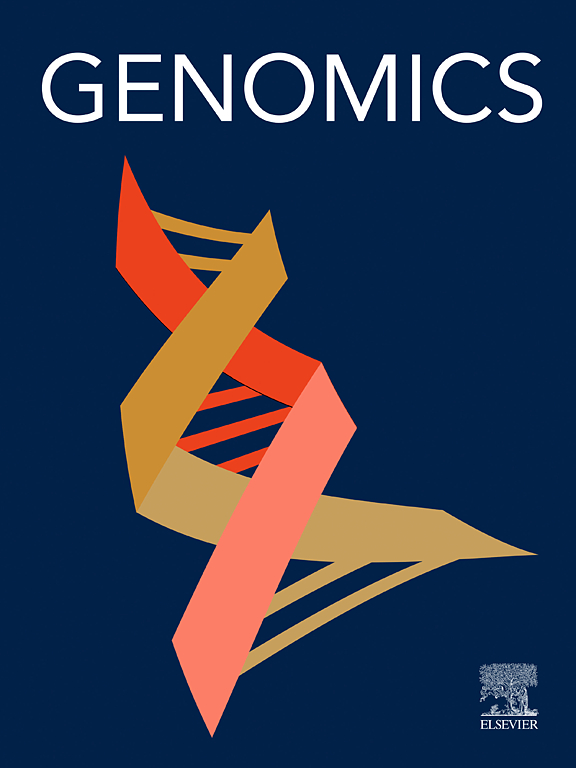CYP17A1 在黔北麻山羊的精原细胞功能和睾丸发育中的关键作用
IF 3.4
2区 生物学
Q2 BIOTECHNOLOGY & APPLIED MICROBIOLOGY
引用次数: 0
摘要
繁殖性状是山羊生产中至关重要的经济参数,提高种公羊的繁殖能力对提高山羊养殖业的收益至关重要。目前,对黔北麻山羊繁殖性能的研究主要集中在母羊多产和发情排卵相关机制的研究上,对公羊繁殖方面的研究较少。本研究利用扫描电镜和酶联免疫吸附试验(ELISA)分析了黔北麻羊不同发育阶段睾丸的形态以及血清中促黄体素(LH)、促卵泡激素(FSH)和睾酮(T)的动态变化。同时,利用转录组测序技术研究了黔北麻羊不同发育阶段(初生(0 M)、青春期(6 M)、性成熟(12 M)和体成熟(18 M))睾丸组织中 mRNA 的表达模式。结果显示,随着年龄的增长,睾丸曲细精管的直径、周长和面积逐渐增大。从出生后 0 个月到 6 个月,血清中的 T 和 LH 水平明显升高(p本文章由计算机程序翻译,如有差异,请以英文原文为准。
Key role of CYP17A1 in Leydig cell function and testicular development in Qianbei Ma goats
Reproductive traits are vital economic parameters in goat production, and boosting the reproductive capacity of breeding rams is crucial for enhancing the profitability of goat farming. Currently, research on the reproductive performance of Qianbei Ma goats mainly centers on investigating mechanisms associated with prolificacy and estrous ovulation in ewes, with limited emphasis on ram reproductive aspects. This study used scanning electron microscopy and enzyme-linked immunosorbent assay (ELISA) to profile the morphology of testis and the dynamic changes of Luteinizing Hormone (LH), Follicle-Stimulating Hormone (FSH), and Testosterone (T) in serum at different developmental stages of Qianbei Ma goats. Meanwhile, transcriptome sequencing technology was used to investigate the mRNA expression patterns in testicular tissues at different developmental stages: newborn (0 M), puberty (6 M), sexual maturity (12 M), and physical maturity (18 M). The results showed that the diameter, circumference, and area of the testicular seminiferous tubules gradually increased with age. The levels of T and LH in serum significantly increased from 0 to 6 months after birth (p < 0.05), followed by a stabilization of T levels and a significant decrease in LH levels (p < 0.05). Meanwhile, FSH shows a decreasing trend between 0 and 18 months after birth. A total of 26,437 differentially expressed genes were identified in 6 comparison groups, which involve various biological processes such as immunity, growth, metabolism, development, and reproduction, and are significantly enriched in signaling pathways related to testicular development and spermatogenesis. WGCNA analysis identified 6 regions significantly associated with testicular development and spermatogenesis, and selected 320 genes for constructing a PPI network. Ten candidate genes related to testicular development and spermatogenesis were identified, including TP53, PLK4, RPS9, PFN4, ACTB, CYP17A1, GPX4, CLDN1, AMH and DHH. Of these, the CYP17A1 gene promotes interstitial cell proliferation, and promotes T synthesis. This study provides a theoretical basis and data support for promoting efficient breeding of goats and early breeding of excellent male goats.
求助全文
通过发布文献求助,成功后即可免费获取论文全文。
去求助
来源期刊

Genomics
生物-生物工程与应用微生物
CiteScore
9.60
自引率
2.30%
发文量
260
审稿时长
60 days
期刊介绍:
Genomics is a forum for describing the development of genome-scale technologies and their application to all areas of biological investigation.
As a journal that has evolved with the field that carries its name, Genomics focuses on the development and application of cutting-edge methods, addressing fundamental questions with potential interest to a wide audience. Our aim is to publish the highest quality research and to provide authors with rapid, fair and accurate review and publication of manuscripts falling within our scope.
 求助内容:
求助内容: 应助结果提醒方式:
应助结果提醒方式:


